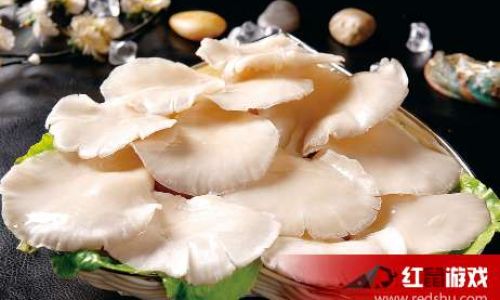Introduction
Mushrooms, with their earthy aroma and umami-rich flavor, are a staple in many culinary delights, ranging from hearty stews to elegant appetizers. Their versatility and nutritional benefits make them a popular choice among health-conscious individuals and gourmet chefs alike. However, the delicate nature of mushrooms often leaves consumers wondering about the best storage practices to preserve their freshness and quality. One common question that arises is whether fresh mushrooms can be stored in the refrigerator. This article delves into the intricacies of storing fresh mushrooms, exploring the suitability of refrigeration, proper storage techniques, and the potential impact on taste, texture, and shelf life.
The Science Behind Mushroom Storage
Mushrooms are living organisms, even after being harvested. They continue to respire, albeit at a slower rate, consuming oxygen and releasing carbon dioxide. This metabolic activity is one of the primary reasons why mushrooms can spoil quickly if not stored properly. Understanding the science behind mushroom respiration is crucial for developing effective storage strategies.

Temperature Sensitivity:
Mushrooms thrive in cool, moist environments. However, extreme temperatures can accelerate spoilage. Refrigeration provides a controlled environment that slows down the respiratory rate of mushrooms, thereby extending their shelf life. The ideal storage temperature for mushrooms is between 39°F to 41°F (4°C to 5°C). This range balances the need to slow down respiration without causing the mushrooms to freeze, which would damage their cellular structure.
Humidity Control:
In addition to temperature, humidity plays a vital role in maintaining mushroom freshness. Mushrooms require high humidity levels to prevent dehydration. A refrigerator’s crisper drawer, designed to maintain higher humidity, is often the best place for storing mushrooms. However, it’s important to note that not all refrigerators maintain consistent humidity levels in their crisper drawers, so monitoring the condition of the mushrooms is still necessary.
Oxygen Exposure:
Excessive exposure to oxygen can lead to browning and spoilage in mushrooms. Packaging mushrooms in airtight containers or wrapping them tightly in paper towels can help minimize oxygen exposure. However, complete oxygen deprivation is also undesirable as it can promote anaerobic respiration, leading to off-flavors and textures. Finding the right balance is key.
Can Fresh Mushrooms Be Stored in the Refrigerator?
Yes, fresh mushrooms can indeed be stored in the refrigerator. However, there are specific guidelines to follow to ensure optimal preservation:
Proper Packaging:
When storing mushrooms in the refrigerator, avoid placing them directly in open containers or on the refrigerator shelves. Instead, use paper bags, paper towels, or breathable produce bags designed for high humidity. These materials allow for some air circulation while maintaining high humidity. Avoid plastic bags unless they have ventilation holes, as they can trap moisture and promote mold growth.
Placement in the Crisper Drawer:
As mentioned earlier, the crisper drawer of a refrigerator is typically the best location for storing mushrooms. It provides a cooler, more humid environment compared to other parts of the fridge. If your refrigerator has multiple crisper drawers, choose the one with the highest humidity setting.

Avoid Stacking:
Do not stack mushrooms too high in the storage container or bag. This can cause them to compress, damaging their delicate structure and promoting spoilage. Spread them out in a single layer or at most in loose piles to allow for proper air circulation.
Monitor and Consume Promptly:
Even under ideal refrigeration conditions, mushrooms will not last indefinitely. Check them regularly for signs of spoilage, such as sliminess, discoloration, or an unpleasant odor. Fresh mushrooms should be consumed within a few days of purchase to maximize their flavor and nutritional value.
Impact of Refrigeration on Mushroom Quality
While refrigeration effectively extends the shelf life of mushrooms, it can also impact their taste and texture. Here’s a closer look at these effects:
Texture Changes:
Refrigeration can cause mushrooms to lose some of their firmness over time. The chilling temperatures slow down cellular activity, including the production of enzymes responsible for maintaining texture. As a result, mushrooms stored in the refrigerator may become softer and more prone to bruising.
Flavor Alteration:
The flavor of mushrooms can also change subtly when stored in the refrigerator. The umami compounds that give mushrooms their rich, savory taste can degrade over time, leading to a less intense flavor profile. Additionally, prolonged refrigeration can sometimes result in a slightly metallic or off taste.
Nutrient Preservation:
On the positive side, refrigeration helps preserve many of the vitamins and minerals found in mushrooms. Vitamins like riboflavin, niacin, and pantothenic acid, as well as minerals such as potassium and selenium, are relatively stable under refrigerated conditions. However, water-soluble vitamins like vitamin C may degrade slightly over time.

Alternative Storage Methods
While refrigeration is the most common method for storing fresh mushrooms, there are alternative approaches worth considering:
Freezing:
For long-term storage, freezing mushrooms is an option. However, this method requires proper preparation to avoid texture degradation. Mushrooms should be cleaned, sliced or chopped, and blanched in boiling water for a brief period before being frozen. Freezing preserves mushrooms for several months but alters their texture, making them best suited for cooked dishes rather than raw consumption.
Drying:
Dried mushrooms retain much of their flavor and can be stored for extended periods. Drying can be done at home using a food dehydrator or in a low oven. Dried mushrooms are excellent for soups, stocks, and sauces, adding a concentrated umami boost to dishes.
Canning:
Canning mushrooms involves preserving them in a sterile environment with a high-acid or low-oxygen atmosphere. This method requires specialized equipment and knowledge of canning techniques to ensure food safety. Canned mushrooms can last for years but may have a different texture and flavor compared to fresh or frozen varieties.
Conclusion
In summary, fresh mushrooms can indeed be stored in the refrigerator, provided that proper techniques are followed. By understanding the science behind mushroom respiration and the impact of temperature and humidity, consumers can create an optimal storage environment that maximizes shelf life while minimizing texture and flavor alterations. Regular monitoring, proper packaging, and prompt consumption are essential practices for maintaining mushroom freshness. Alternatively, freezing, drying, and canning offer viable options for long-term preservation, each with its own set of benefits and considerations. Ultimately, the choice of storage method depends on individual needs, preferences, and the intended use of the mushrooms.






0 comments